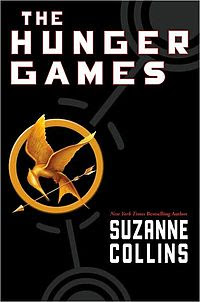Krakauer, Jon.
Into the Wild. Villard, 1996. 224
pages. Tr. $25.
ISBN: 978-0679428503
Plot: Young Christopher McCandless had just graduated from
Emory University when he got rid of the few personal items he had accrued,
gave away tens of thousands of dollars to Oxfam International, and took off in
his car. He did not tell his upper-middle-class family in Annandale, Virginia, that he was taking off. For two years, McCandless took to the road, seeking for,
it seems, a life of philosophical introspection, communing with nature, and the
soul-cleansing experience of pushing a body and mind out of civilization and to
the very brink of its resources. He ventured west, north and south, making his
way to Arizona, California, Mexico, North Dakota, and Alaska, driving, then hitchhiking, and living on rice, wild berries and the kindness of strangers. McCandless’
conjured up a dream of an “Alaskan Odyssey” and he heads out alone to the
Alaskan bush, where he eventually starved to death in an abandoned bus in the wilderness,
which turned out to be not as remote as he had hoped but it was remote enough
that he couldn’t get help when he needed it.
_cover.png)
Critical Evaluation: The book is a biography of McCandless’
life but it also examines the spiritual and psychological need for some men to journey into the often dangerous wilderness. At heart a mystery about what happened
to a recent college graduate when he broke with his family and abandoned
conventional civilization, it also goes beyond this to fully capture the psychic wounds and the spirit
of adventure that pushes boys and men to forge into some of the most remote areas. He looks at historical figures who have gone off the deep end on wilderness quests. Writer Krakauer is
an adventurer and risk-taker who had done his share of travelling into
the wilderness in what some might call dangerous or foolhardy ways himself. There is a “There
by the grace of God…” quality to the writing and a deep sympathy for McCandless. Krakauer compares McCandless to some famous wilderness worshipers
and compares his journey to a religious pilgrimage. It is a heady travelogue,
gripping psychological investigation, and a through study of the spirit of
adventure that can uplift and inspire as much as it can hurt and destroy.
Reader’s Annotation: When a young man ventures into the
wilderness and dies, a risk-taking writer tries to understand what made him –
and so many others in American history – take incredible risks for a taste of
freedom.
Author bio: A lifelong adventurer and mountain climber, Jon
Krakauer was covering an expedition for Outside Magazine when his expedition
fell into tragedy. His documentation of what happened during that fatal trek
became “Into Thin Air,” his acclaimed book that explored the combination of
mistakes and fatal bad luck during those days.
A native of Brookline, MA, and
Corvallis, OR, and graduate of Hampshire College, Krakauer has lived in
Washington and Colorado. His books tend to explore the place where man’s love
of the wilderness turns to hubris.
Genre: Non-fiction, adventure
Curriculum Ties: Many of McCandless’ issues are
anti-Capitalist and his philosophy was affected by a utopian, back-to-the-land
pre-Communism that was rampant in Russia before the revolution. One could link the book to Capitalism
and early dissatisfaction with social changes caused by the Industrial
Revolution.
California
State Standards: World History – The Modern World
10.3
2. Examine how
scientific and technological changes and new forms of energy brought about
massive social, economic, and cultural change (e.g., the inventions and discov
eries of James Watt, Eli Whitney, Henry Bessemer, Louis Pasteur, Thomas
Edison).
3. Describe the
growth of population, rural to urban migration, and growth of cities associated
with the Industrial Revolution.
6. Analyze the emergence of
capitalism as a dominant economic pattern and the responses to it, including
Utopianism, Social Democracy, Socialism, and Communism.
Booktalking Ideas: 1) Focus on a young son’s rejection of
his family background, what they stand for…
2) Ask the questions of the book – treat the book like the
mystery that it is and get the audience involved in asking some questions.
3) Talk about nature – what nature does for us and how
little interaction that we have with it in modern urban/suburban life.
4) Focus on the desire to break free, gain independence.
5) Talk about explorers and risk takers. Bring up a couple
of amazing feats. Discuss why anyone would ever want to take such risks.
Reading Level: Eighth grade
Interest Level: Ninth grade and up
Challenge Issues: Some may say that the book glorifies
reckless, thoughtless behavior.
Challenge Responses: 1) Be familiar with many positive
reviews in notable papers, such as the New York Times. 2) Have the collection
development policy handy.
Why Included: The movie and the book got very good reviews,
drew attention to a story that was shocking and widespread. The book is very highly regarded by the
Los Angeles Times YA book critic.










_cover.png)






